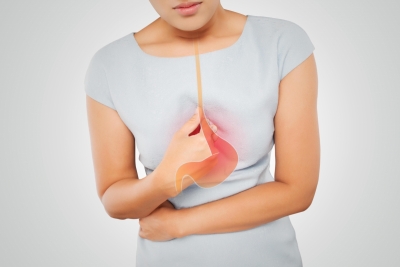Reflux

At the junction of the esophagus and stomach, an angle called “Angle of His” is formed. Normally, the stomach content does not pass into the esophagus due to the pressure difference between the chest and abdominal parts of the esophagus. In the event that the esophagus is short or the gap in the diaphragm expands, both the His angle is disturbed and the pressure difference in the esophagus disappears. Since the inner wall of the esophagus is not resistant to the acid in the stomach, complaints such as burning in the chest and bitter water come to the mouth occur. The chemical burn that occurs as a result of long-term contact of the esophageal mucosa with its normal stomach content is called esophagitis. Barrett's esophagus, which is considered a precancerous lesion,stenosis, ulcer may develop in the esophagus due to esophagitis.
Diagnosis
X-ray of the upper digestive system with barium: It helps in the diagnosis of diseases such as achalasia and Zenker's diverticulum especially in patients with difficulty in swallowing.
Gastroscopy: It is the gold standard in the diagnosis of esophageal diseases. It enables the presence and degree of esophagitis and hiatal hernia.
Manometry: Its main value is not in making a diagnosis of reflux, but it distinguishes diseases that present reflux-like symptoms and progress with esophageal movement disorder (achalasia, diffuse esophageal spasm, nutcracker esophagus, etc.).
24 hours pH monitoring: It is a method that gives numerical values for reflux measurement. The number of reflux attacks and the duration of the reflux can be measured.







